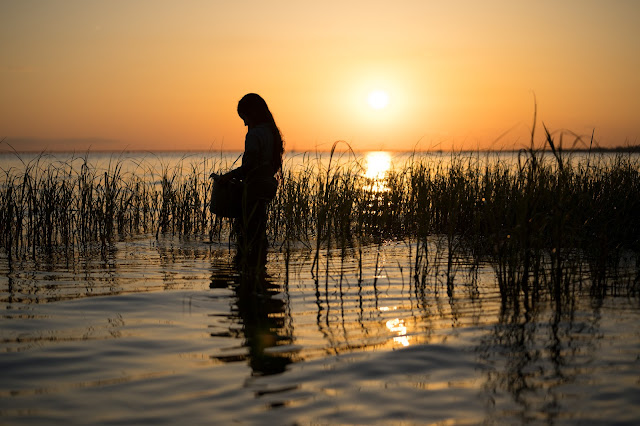There’s a reason that certain details and elements are changed when a novel is made into a film. It’s called an adaptation after all, and both should act independently as separate, perhaps even mutually beneficial experiences. I haven’t read Where the Crawdads Sing, which placed on the The New York Times Bestseller list for 135 consecutive weeks, and yet I still get the feeling that it falls into the opposite category.
 |
| Image courtesy of Sony Pictures |
Let’s discount anything floating around online about Delia Owens, author of the original novel — as I’ve mentioned, I’m a huge proponent of separating the art from the artist — and it shouldn’t impact anything related to the film, anyway. Where the Crawdads Sing is structured like a novel, filled with expositional narration from beginning to end, signaling that “show, don't tell” was not a thought oft had during production.
Of course, this doesn’t take anything away from the look of the film. Taking place in extremely rural North Carolina but filmed in New Orleans and Louisiana, there’s plenty of beautiful sights to be seen. The problem with this is that Crawdads touts itself as a character story, flashing backwards and forwards through time to flesh out our protagonist in vignettes that take place over the course of nearly twenty years. It’s not necessarily trying to be a visual spectacle, but somehow the scenery and environment are probably my favorite thing about the movie — I’ll attribute this to director Olivia Newman (Netflix’s First Match), cinematographer Polly Morgan (Legion, A Quiet Place Part II) and production designer Sue Chan (Shang-Chi).
 |
| Image courtesy of Sony Pictures |
The protagonist in question is Kya Clark (Fresh’s Daisy Edgar-Jones), a young woman who raised herself in a marsh house after being abandoned by her parents and siblings. She’s drawn into a murder investigation in the nearby town, after the death of star quarterback Chase Andrews (The King’s Man’s Harris Dickinson), a man that Kya was romantically involved with. The town in which she will be tried has always been prejudiced against Kya, calling her “the Marsh Girl,” making her chances of escaping the death penalty even more slim.
Daisy Edgar-Jones does all she can to craft an engaging central figure, but it’s difficult to avoid being any sort of stereotype — and the same goes for the rest of the cast and their characters. These are all people encountered by Kya at different walks of life, but most of them feel like they’re from different movies, and their presence here is just a coalescence of various threads trying hard to make a sum that is worthy of its parts. It’s so disjointed that it felt a solid half-hour longer than it actually was.
 |
| Image courtesy of Sony Pictures |
I didn’t hate Where the Crawdads Sing, but the more I think about it, the less about it I reflect on positively. I’ve heard great things about the novel, but the film should be able to stand on its own. It’s just a shame that with so much evident talent involved, Crawdads doesn’t do much more than sink. Just listen to Taylor Swift’s original song and call it a day.
Where the Crawdads Sing is in theaters now.




No comments:
Post a Comment